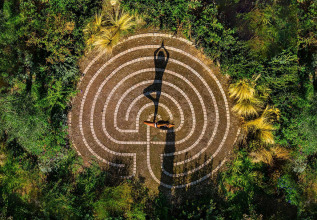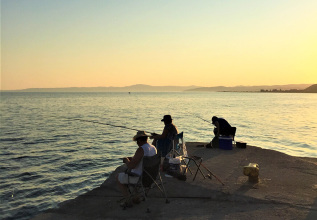Festivals of Amorgos

The festivals on the Aegean islands and indeed throughout Greece are those unique moments during the year when the members of every community get together to honour the patron saint to whom the local church, chapel or monastery is dedicated. After the service, the solemnity turns into celebration which is part of the rite of unity and belonging. The mass and prayers, the food and drink, various customs linked with the phases of agricultural or pastoral life, dancing, singing and having a good time are the ingredients that make up a panegyri or festival, and they are of enormous interest both as a whole and independently. For this reason, church festivals as a social event represent an unparalleled quintessence of life and culture that is rarely found at other types of celebration. On Amorgos, these festivals seem to be endless, occurring all over the island all year long. The season begins with Carnival and the ‘Kapetanios’ parade at Langada and ends on 21 November with the Presentation of the Virgin at Hozoviotissa. Some festivals are conducted more formally at monasteries, like Agia Paraskevi, others take place in private chapels, fields or pastures near villages, while still others are held in high, remote locations, where getting there can be quite a challenge, as at the feast of the True Cross at Krikelo on 14 September.
The Festival of Agia Paraskevi (25 July) at Kato Meria happens to be the biggest traditional panegyri in the Cyclades. Every year the islanders offer 150 sheep and goats and two or three steer and calves for the feast, and most of the volunteers who work on the festival preparations are farmers and shepherds. All the bread for the event is baked in the church oven, which can hold 56 round loaves weighing 2 ½ kg each, and if you think that about 750 such loaves are made for each panegyri, the mind boggles. The food is stewed in huge cauldrons under the watchful eye of archcook Vangelis Mendrinos. After vespers held in the church, the congregation – believers and visitors – are led to open-air dining areas, where they are served generous portions of the classic patatato of Amorgos, or of “kofto”, or of “xydato”. Dozens of ‘waiters’ take the plates with the stew to the large courtyard and set the tables for each sitting (there are usually three to four sittings) for a total of 4,000 people or more. The dancing begins shortly after midnight and lasts until dawn, a little before the mass begins. At midday, the tables are set again and the feasting begins all over again, with the inimitable patatato in the leading role!


